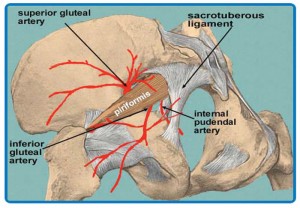By Adam Shuster, DO Pain Management Consultants of SWFL –


Patients with piriformis syndrome may have pain in the region of the sacroiliac joint. The pain may radiate from the buttocks to the leg and may cause difficulty in walking. Bending or lifting can also exacerbate the pain. Patients may also have a tender sausage-shaped mass over the piriformis syndrome.
The diagnosis of piriformis syndrome may be aided by obtaining a CT scan, MRI, or electromyography (EMG). Other painful conditions, which may mimic piriformis syndrome, include radiculopathy and other causes of low back pain. However, patients typically do not suffer from weakness or numbness in piriformis syndrome, unless the sciatic nerve is affected or irritated.
Treatment of piriformis syndrome includes physical therapy, muscle relaxants, anti-inflammatory agents, and other analgesics. Physical therapy may focus on correcting any biomechanical abnormalities, such as fixing posture, pelvic tilt, and leg length discrepancies. Patients who fail conservative treatment may benefit from injection with steroid and local anesthetic. The injection may help decrease irritation of the sciatic nerve and break the pain/spasm cycle of the piriformis muscle.
Florida Pain Centers
239.333.1177
 Southwest Florida's Health and Wellness Magazine Health and Wellness Articles
Southwest Florida's Health and Wellness Magazine Health and Wellness Articles

